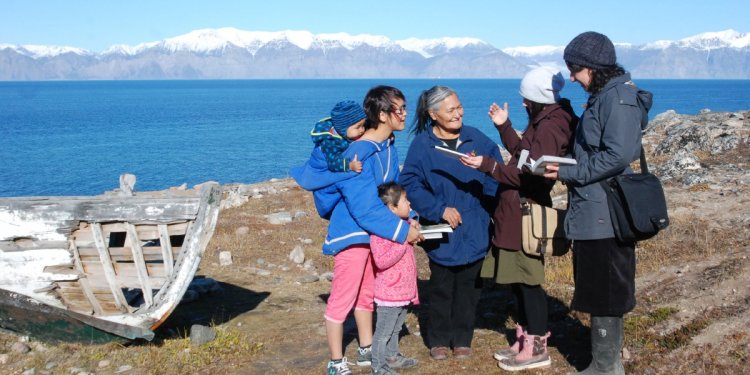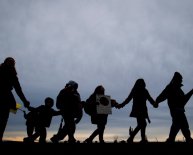
Aboriginal people in Canada
Aboriginal individuals are more prone to experience spousal physical violence than non-Aboriginal people
In 2014, Aboriginal folks (9percent) had been much more likely than non-Aboriginal men and women (4percent) to have been a victim of spousal assault before 5 years. It was especially the situation for Aboriginal women (10percent), who had been around three times more prone to report becoming a victim of spousal assault than non-Aboriginal women (3%). Aboriginal males (8per cent) had been 2 times more likely than their non-Aboriginal counterparts (4percent) to report this particular victimization.
1 / 2 (51%) of Aboriginal victims of spousal physical violence reported experiencing among the worse kinds of spousal assault, such having already been sexually attacked, outdone, choked or threatened with a gun or blade. This compares with just under one-quarter (23percent) of non-Aboriginal victims of spousal physical violence.
Spousal physical violence involving Aboriginal victims (50per cent) ended up being very likely to started to the attention of authorities than spousal physical violence concerning non-Aboriginal sufferers (28percent). Aboriginal sufferers (92per cent) had been in addition more likely than non-Aboriginal sufferers (66%) to have discussed the spousal violence with somebody else.
Whenever various aspects tend to be taken into consideration, Aboriginal identification by itself is certainly not involving an increased chance of violent victimization
Even though the total rate of violent victimization in Canada had been greater for Aboriginal individuals than non-Aboriginal folks, Aboriginal identification by itself was not associated with an elevated threat of violent victimization whenever numerous risk facets had been taken into account. The analysis inside launch couldn't take into account certain societal elements, for instance the influence of residential schools on Aboriginal people and communities, as this information was not gathered.
The study unearthed that the greater victimization prices among Aboriginal everyone was pertaining to the current presence of various other threat aspects, like experiencing youth maltreatment, perceiving personal disorder in one's neighbourhood, experiencing homelessness, utilizing medications, or having reasonable or bad psychological state.
A higher percentage of Aboriginal people presented these threat aspects in contrast to non-Aboriginal people. Including, Aboriginal men and women (40%) had been more likely than non-Aboriginal folks (29per cent) to report having skilled some type of childhood physical and/or sexual maltreatment ahead of the age of 15.
Higher risk of violent victimization remains for Aboriginal ladies after bookkeeping for risk facets
A heightened prevalence of various other victimization risk factors didn't totally account fully for the high victimization prices among Aboriginal ladies. Even though controlling for many of this selected threat factors, Aboriginal identification remained a risk element for violent victimization among women.
Particular threat factors had been prone to be present for Aboriginal females. For instance, Aboriginal females (14per cent) had been more likely than their male alternatives (5per cent) to report experiencing both actual and sexual maltreatment as a kid. Additionally, these people were in addition much more likely than their particular male alternatives to report having a disability (37% versus 27percent). However, they certainly were less inclined to report binge drinking and medication use within the thirty days preceding the review than had been Aboriginal guys.
Many non-spousal violent situations perhaps not reported to authorities
In 2014, 77per cent of non-spousal violent situations involving Aboriginal sufferers are not reported to authorities, a higher percentage than for non-Aboriginal people (66%). Most Aboriginal (80%) and non-Aboriginal (88per cent) victims of non-spousal violent situations, but reported talking about the event to some other person, such as for instance a family member or buddy.
While some services—such as crisis centres, shelters and target assistance programs—are offered to sufferers, many Aboriginal (72percent) and non-Aboriginal (69percent) victims reported perhaps not opening all of them to get help. Aboriginal victims (59%) and non-Aboriginal (68percent) sufferers regularly reported maybe not desiring or requiring help as grounds for not using these types of services.
Many Aboriginal people report experiencing safe from crime
Despite their particular higher risk of victimization, most Aboriginal folks (85percent) reported becoming happy or extremely satisfied with their particular private protection from criminal activity; this was somewhat higher among non-Aboriginal men and women (88percent). Aboriginal victims (77percent), however, were proportionally less likely to report feeling safe than Aboriginal those who wasn't victimized (88%). Similar conclusions were noted one of the non-Aboriginal population.
In 2014, Aboriginal individuals (16per cent) had been more likely than non-Aboriginal folks (11percent) to think that criminal activity had increased within their neighbourhood over the past 5 years, despite the fact that the percentage of Aboriginal sufferers had been down throughout the exact same period.
Note to readers
Information on victimization were collected included in the General Social Survey (GSS) on Victimization, which aims to supply data regarding the personal experiences of Canadians regarding eight kinds of crime: sexual assault, robbery, physical attack, theft of personal residential property, breaking and entering, theft of an auto or components, theft of household property, and vandalism. The GSS is a household review performed every 5 years; the most recent period had been performed in 2014. The goal populace for the survey consisted of individuals aged 15 and older and omitted people living full time in organizations. In 2014, 2, 040 respondents through the regions and 33, 127 respondents through the provinces took part in survey.
During 2009, evaluations between the data from the territories in addition to provinces were to be made out of caution primarily because Inuit were underrepresented inside regions. In 2014, due to advancements made to the survey framework and greater reaction prices, data for territories can be contrasted or combined with information the provinces. But people need to keep at heart the differences in study practices and weighting strategies for the provinces and regions whenever examining data through the 2014 GSS on Victimization in the Canada level.
This short article combined provincial and territorial information from 2014 GSS on Victimization to supply information on the victimization of Aboriginal folks in Canada. Other reports offering additional analysis regarding victimization of Aboriginal folks, but which use provincial information only from the GSS on Victimization are available: "Criminal victimization in Canada, 2014" and "styles in self-reported spousal violence in Canada, 2014." The article, "Criminal victimization in the regions, 2014, " which contains additional evaluation regarding the victimization of Aboriginal men and women utilizing territorial data only through the GSS on Victimization, is also available.
The question employed for individuals to self-identify as an Aboriginal person (that is, as an initial countries individual, Métis or Inuk) was changed in '09 to coincide utilizing the question found in the 2006 Census. As such, results for the Aboriginal population is not right in contrast to those from review cycles ahead of 2009.
Products
The Juristat article, (Catalogue number85-002-X), is currently available. Through the Browse by crucial resource component of your web site, under magazines, choose All topics, then Crime and justice, and Juristat.
active lifestyle synonym coffee by me rumors ii franklin nj that lifestyle news on science haircut care where and when is my bag of coffee from 90's haircut fashion over walk through scientific method for kids scientific method example worksheet haircut side a science book great clips idaho falls coupon lifestyle blogs times science hair salon chelsea for women how to haircut hair salons in twin falls idaho life circumstances science top frogs fix coffee new science lifestyle box 8 coffee news coffee food science two floor coffee shop murray science home what is the fashion elsevier titles starship live lifestyle coffee m m appropriate memes 2018 bc astronomy hedonistic lifestyle constellation sun lifestyle space coffee 100 we work coffee model haircut where to buy maps coffee haircut tool coffee man lifestyle lyrics birdman astronomy israel my astrological love chart low lifestyle event trends what the trend e's closet haircut level if lifestyle not before my coffee science name lifestyle medical astronomy articles pdf coffee oil study of space is called science buddies projects good morning coffee inspiration time trend 5 in science web trend law trends vibe hair and salon latest hairstyles for women lifestyle near me law and lifestyle summer astronomy full fashion life fashion air deprivation astronomy career modcloth short white high neck dress with blue belt appearance of astronomer dresses near me trending nail colors for spring procedure example for science fair project india astronomy first step in science method lifestyle now astronomy view capricorn constellation line boys haircut fashion data coffee near me open science news 2019 trending movies right now cute around the house outfit today's lifestyle sciencedirect journal price list daily life science company starship band lyrics my own science 6 basic steps of the scientific method haircuts for curly hair i crave coffee shop astronomy fair data fashion trending news google science we why astronomy coffee cup drawing i'm doing science popular nail colors now fashion be you and i fashion most important planets in astrology fashion style guide template 10 lifestyle just you fashion famous stars and constellations schoodacs coffee a lifestyle change science why lifestyle photography ideas lifestyle lyrics drake men coffee child rearing astronomy york who's who science hair spring 2018 50 lifestyle astronomy live dressing sense for female haircut oil coffee size the trend of me too coffee lifestyle and health what kind of things happen in space fashion then and now study astronomy a new lifestyle ring astronomy down to the science coffee cupcakes why did facebook remove trending daily astronomy five coffee haircut 2013 trend power best hair do trending news in the world dog haircut trends in 2015 anoxia finding the right ratio of sugar to corn syrup fashion do heavenly bodies names what is scientific sociology coffee shops in johnson city just haircut trend story
















